Achieving Ultra-Low Friction with Diamond/Metal Systems in Extreme Environments
Abstract
:1. Introduction
2. Methods
3. Results and Discussion
3.1. Macroscopic Sliding Experiments
3.2. Microscopic Sliding Experiments
3.3. Chemical and Structural Analysis
4. Conclusions
Author Contributions
Funding
Institutional Review Board Statement
Informed Consent Statement
Data Availability Statement
Acknowledgments
Conflicts of Interest
References
- Jones, W.R., Jr.; Jansen, M.J. Space Tribology; NASA/TM-2000-209924; NASA: Washington, DC, USA, 2000. [Google Scholar]
- Donnet, C.; Erdemir, A. (Eds.) Tribology of Diamond-Like Carbon Films: Fundamentals and Applications; Springer: Berlin/Heidelberg, Germany, 2008. [Google Scholar]
- Erdemir, A.; Donnet, C. Tribology of diamond-like carbon films: Recent progress and future prospects. J. Phys. D Appl. Phys. 2006, 39, R311. [Google Scholar] [CrossRef]
- Erdemir, A.; Donnet, C. Tribology of diamond, diamond-like carbon, and related films. Mod. Tribol. Handb. 2001, 2, 871–908. [Google Scholar]
- Bull, S. Tribology of carbon coatings: DLC, diamond and beyond. Diam. Relat. Mater. 1995, 4, 827–836. [Google Scholar] [CrossRef]
- Voevodin, A.A.; O’Neill, J.P.; Zabinski, J.S. Nanocomposite tribological coatings for aerospace applications. Surf. Coat. Technol. 1999, 116–119, 36–45. [Google Scholar] [CrossRef]
- Ferrari, A.C. Diamond-like carbon for magnetic storage disks. Surf. Coat. Technol. 2004, 180–181, 190–206. [Google Scholar] [CrossRef]
- Dearnley, P.A.; Neville, A.; Turner, S.; Scheibe, H.-J.; Tietema, R.; Tap, R.; Stüber, M.; Hovsepian, P.; Layyous, A.; Stenbom, B. Coatings tribology drivers for high density plasma technologies. Surf. Eng. 2010, 26, 80–96. [Google Scholar] [CrossRef]
- Krauss, A.R.; Auciello, O.; Gruen, D.M.; Jayatissa, A.; Sumant, A.; Tucek, J.; Mancini, D.C.; Moldovan, N.; Erdemir, A.; Ersoy, D.; et al. Ultrananocrystalline diamond thin films for MEMS and moving mechanical assembly devices. Diam. Relat. Mater. 2001, 10, 1952–1961. [Google Scholar] [CrossRef]
- Alias, A.A.; Kinoshita, H.; Fujii, M. Tribological properties of diamond nanoparticle additive in water under a lubrication between steel plate and tungsten carbide ball. J. Adv. Mech. Des. Syst. Manuf. 2015, 9, JAMDSM0006. [Google Scholar] [CrossRef] [Green Version]
- Scharf, T.; Singer, I. Third bodies and tribochemistry of DLC coatings. In Tribology of Diamond-Like Carbon Films; Springer: Berlin/Heidelberg, Germany, 2008; pp. 201–236. [Google Scholar]
- Scharf, T.W.; Singer, I.L. Quantification of the Thickness of Carbon Transfer Films Using Raman Tribometry. Tribol. Lett. 2003, 14, 137–145. [Google Scholar] [CrossRef]
- Pastewka, L.; Moser, S.; Gumbsch, P.; Moseler, M. Anisotropic mechanical amorphization drives wear in diamond. Nat. Mater. 2011, 10, 34–38. Available online: http://www.nature.com/nmat/journal/v10/n1/abs/nmat2902.html#supplementary-information (accessed on 4 June 2021). [CrossRef]
- Kunze, T.; Posselt, M.; Gemming, S.; Seifert, G.; Konicek, A.R.; Carpick, R.W.; Pastewka, L.; Moseler, M. Wear, plasticity, and rehybridization in tetrahedral amorphous carbon. Tribol. Lett. 2014, 53, 119–126. [Google Scholar] [CrossRef]
- Bouchet, M.D.B.; Matta, C.; Vacher, B.; Le-Mogne, T.; Martin, J.; von Lautz, J.; Ma, T.; Pastewka, L.; Otschik, J.; Gumbsch, P. Energy filtering transmission electron microscopy and atomistic simulations of tribo-induced hybridization change of nanocrystalline diamond coating. Carbon 2015, 87, 317–329. [Google Scholar] [CrossRef]
- Peguiron, A.; Moras, G.; Walter, M.; Uetsuka, H.; Pastewka, L.; Moseler, M. Activation and mechanochemical breaking of C–C bonds initiate wear of diamond (110) surfaces in contact with silica. Carbon 2016, 98, 474–483. [Google Scholar] [CrossRef]
- Pastewka, L.; Moser, S.; Moseler, M. Atomistic Insights into the Running-in, Lubrication, and Failure of Hydrogenated Diamond-Like Carbon Coatings. Tribol. Lett. 2010, 39, 49–61. [Google Scholar] [CrossRef]
- Grill, A. Review of the tribology of diamond-like carbon. Wear 1993, 168, 143–153. [Google Scholar] [CrossRef]
- Gardos, M. Tribological fundamentals of polycrystalline diamond films. Surf. Coat. Technol. 1999, 113, 183–200. [Google Scholar] [CrossRef]
- Grillo, S.; Field, J. The polishing of diamond. J. Phys. D Appl. Phys. 1997, 30, 202. [Google Scholar] [CrossRef]
- Singer, I.L.; Dvorak, S.D.; Wahl, K.J.; Scharf, T.W. Role of third bodies in friction and wear of protective coatings. J. Vac. Sci. Technol. A Vac. Surf. Film. 2003, 21, S232–S240. [Google Scholar] [CrossRef] [Green Version]
- Sawyer, W.G.; Wahl, K.J. Accessing Inaccessible Interfaces: In Situ Approaches to Materials Tribology. MRS Bull. 2008, 33, 1145–1150. [Google Scholar] [CrossRef] [Green Version]
- Chromik, R.R.; Winfrey, A.L.; Luning, J.; Nemanich, R.J.; Wahl, K.J. Run-in behavior of nanocrystalline diamond coatings studied by in situ tribometry. Wear 2008, 265, 477–489. [Google Scholar] [CrossRef]
- Gao, G.T.; Mikulski, P.T.; Harrison, J.A. Molecular-Scale Tribology of Amorphous Carbon Coatings: Effects of Film Thickness, Adhesion, and Long-Range Interactions. J. Am. Chem. Soc. 2002, 124, 7202–7209. [Google Scholar] [CrossRef]
- Gao, G.; Cannara, R.J.; Carpick, R.W.; Harrison, J.A. Atomic-scale friction on diamond: A comparison of different sliding directions on (001) and (111) surfaces using MD and AFM. Langmuir 2007, 23, 5394–5405. [Google Scholar] [CrossRef] [PubMed]
- Piotrowski, P.L.; Cannara, R.J.; Gao, G.; Urban, J.J.; Carpick, R.W.; Harrison, J.A. Atomistic factors governing adhesion between diamond, amorphous carbon and model diamond nanocomposite surfaces. J. Adhes. Sci. Technol. 2010, 24, 2471–2498. [Google Scholar] [CrossRef] [Green Version]
- Romero, P.A.; Pastewka, L.; Von Lautz, J.; Moseler, M. Surface passivation and boundary lubrication of self-mated tetrahedral amorphous carbon asperities under extreme tribological conditions. Friction 2014, 2, 193–208. [Google Scholar] [CrossRef] [Green Version]
- Pastewka, L.; Moser, S.; Moseler, M.; Blug, B.; Meier, S.; Hollstein, T.; Gumbsch, P. The running-in of amorphous hydrocarbon tribocoatings: A comparison between experiment and molecular dynamics simulations. Int. J. Mater. Res. 2008, 99, 1136–1143. [Google Scholar] [CrossRef]
- Goel, S.; Luo, X.; Agrawal, A.; Reuben, R.L. Diamond machining of silicon: A review of advances in molecular dynamics simulation. Int. J. Mach. Tools Manuf. 2015, 88, 131–164. [Google Scholar] [CrossRef] [Green Version]
- Stoyanov, P.; Romero, P.A.; Merz, R.; Kopnarski, M.; Stricker, M.; Stemmer, P.; Dienwiebel, M.; Moseler, M. Nanoscale sliding friction phenomena at the interface of diamond-like carbon and tungsten. Acta Mater. 2014, 67, 395–408. [Google Scholar] [CrossRef]
- Stoyanov, P.; Stemmer, P.; Järvi, T.; Merz, R.; Romero, P.; Scherge, M.; Kopnarski, M.; Moseler, M.; Fischer, A.; Dienwiebel, M. Friction and wear mechanisms of tungsten-carbon systems: A comparison of dry and lubricated conditions. ACS Appl. Mater. Interfaces 2013, 5, 6123–6135. [Google Scholar] [CrossRef]
- Stoyanov, P.; Merz, R.; Romero, P.A.; Wählisch, F.C.; Abad, O.T.; Gralla, R.; Stemmer, P.; Kopnarski, M.; Moseler, M.; Bennewitz, R.; et al. Surface Softening in Metal–Ceramic Sliding Contacts: An Experimental and Numerical Investigation. ACS Nano 2015, 9, 1478–1491. [Google Scholar] [CrossRef] [PubMed]
- Korres, S.; Dienwiebel, M. Design and Construction of a Novel Tribometer with Online Topography and Wear Measurement; AIP Publishing: Melville, NY, USA, 2010; Volume 81, p. 063904. [Google Scholar]
- Stoyanov, P.; Romero, P.A.; Järvi, T.T.; Pastewka, L.; Scherge, M.; Stemmer, P.; Fischer, A.; Dienwiebel, M.; Moseler, M. Experimental and numerical atomistic investigation of the third body formation process in dry tungsten/tungsten-carbide tribo couples. Tribol. Lett. 2013, 50, 67–80. [Google Scholar] [CrossRef]
- Barriga, J.; Fernández-Diaz, B.; Juarros, A.; Ahmed, S.I.U.; Arana, J.L. Microtribological analysis of gold and copper contacts. Tribol. Int. 2007, 40, 1526–1530. [Google Scholar] [CrossRef]
- Achanta, S.; Liskiewicz, T.; Drees, D.; Celis, J.P. Friction mechanisms at the micro-scale. Tribol. Int. 2009, 42, 1792–1799. [Google Scholar] [CrossRef]
- Scherge, M.; Gorb, S. Biological Micro- and Nanotribology; Springer: Berlin, Germany, 2001. [Google Scholar]
- Rigney, D.A. Transfer, mixing and associated chemical and mechanical processes during the sliding of ductile materials. Wear 2000, 245, 1–9. [Google Scholar] [CrossRef]
- Scherge, M.; Shakhvorostov, D.; Pöhlmann, K. Fundamental wear mechanism of metals. Wear 2003, 255, 395–400. [Google Scholar] [CrossRef]
- Fu, X.-Y.; Rigney, D.A.; Falk, M.L. Sliding and deformation of metallic glass: Experiments and MD simulations. J. Non-Cryst. Solids 2003, 317, 206–214. [Google Scholar] [CrossRef]
- Fischer, A. Subsurface microstructural alterations during sliding wear of biomedical metals. Modelling and experimental results. Comput. Mater. Sci. 2009, 46, 586–590. [Google Scholar] [CrossRef]
- Mehan, R.; Hayden, S. Friction and wear of diamond materials and other ceramics against metal. Wear 1981, 74, 195–212. [Google Scholar] [CrossRef]
- Dienwiebel, M.; Stoyanov, P.; Moseler, M. Gleitkontakt für Hoch-Und Ultrahochvakuumanwendungen. Patent DE102013014068A1, 26 February 2015. [Google Scholar]
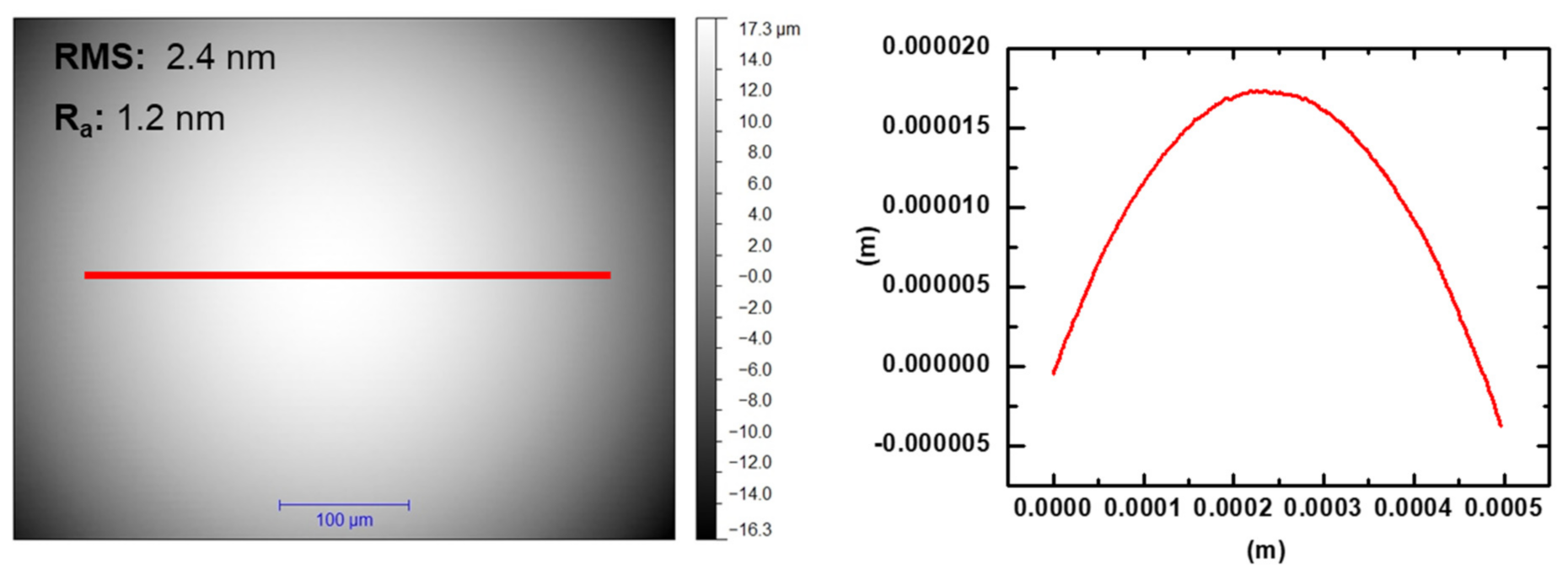
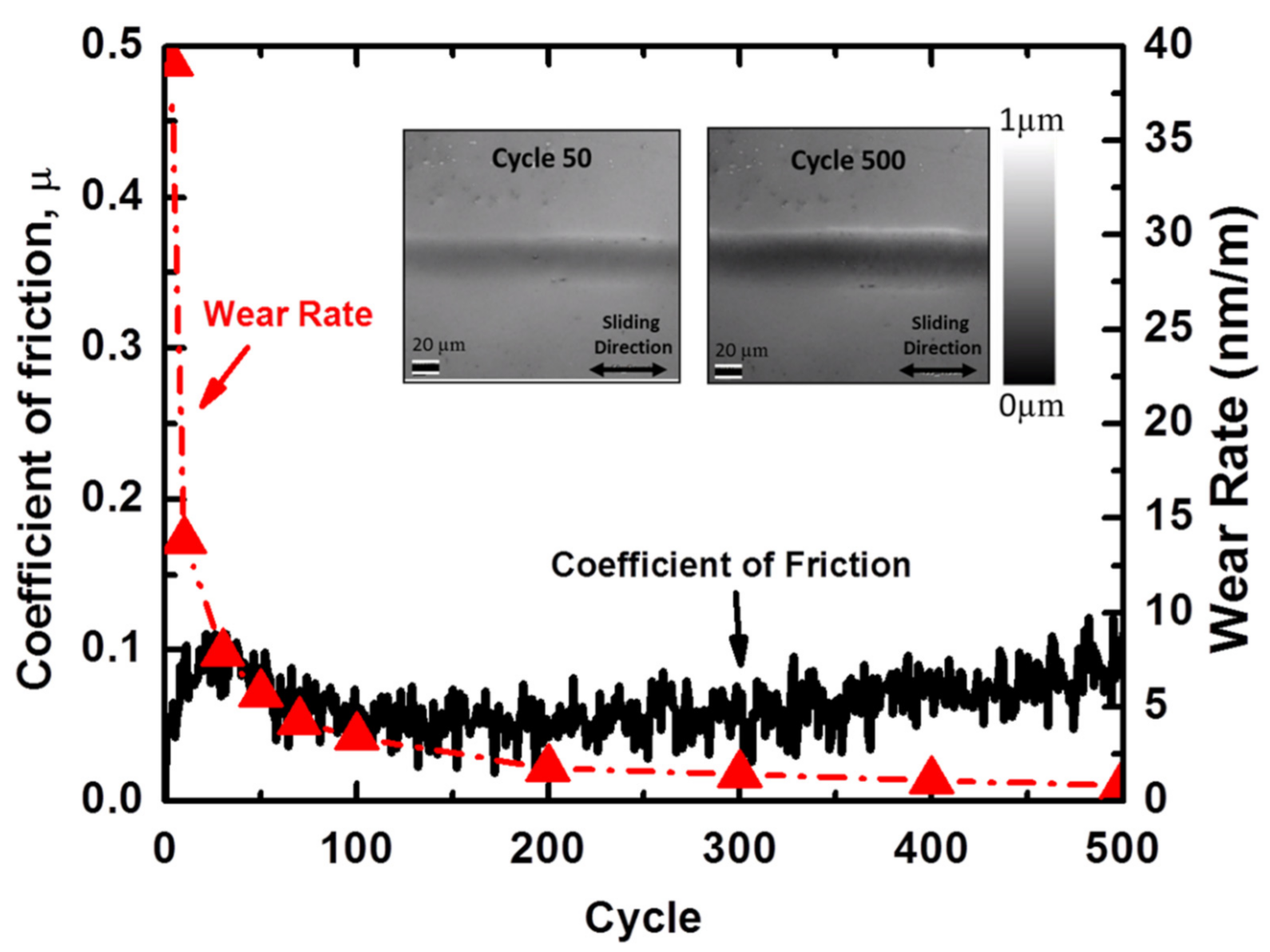
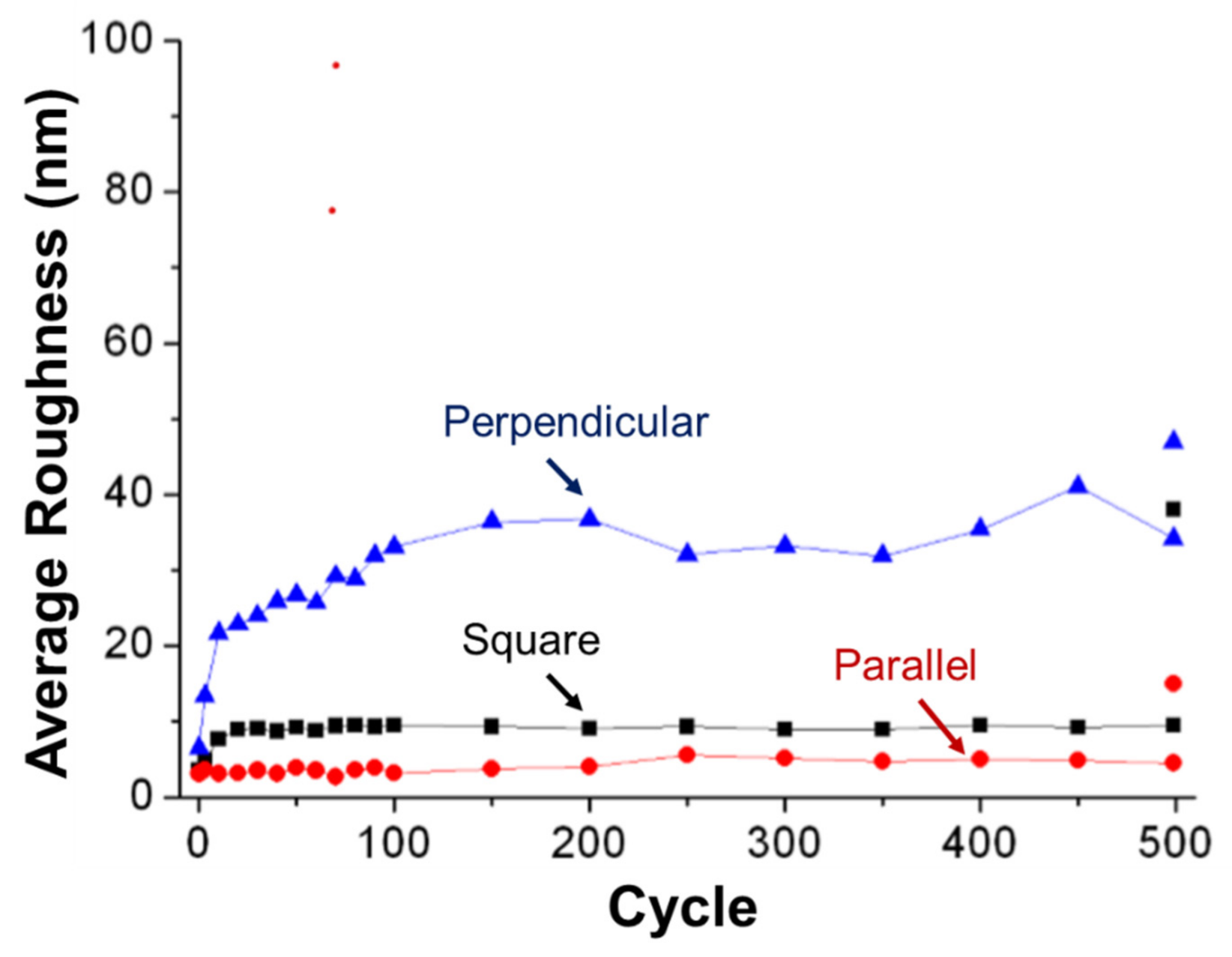
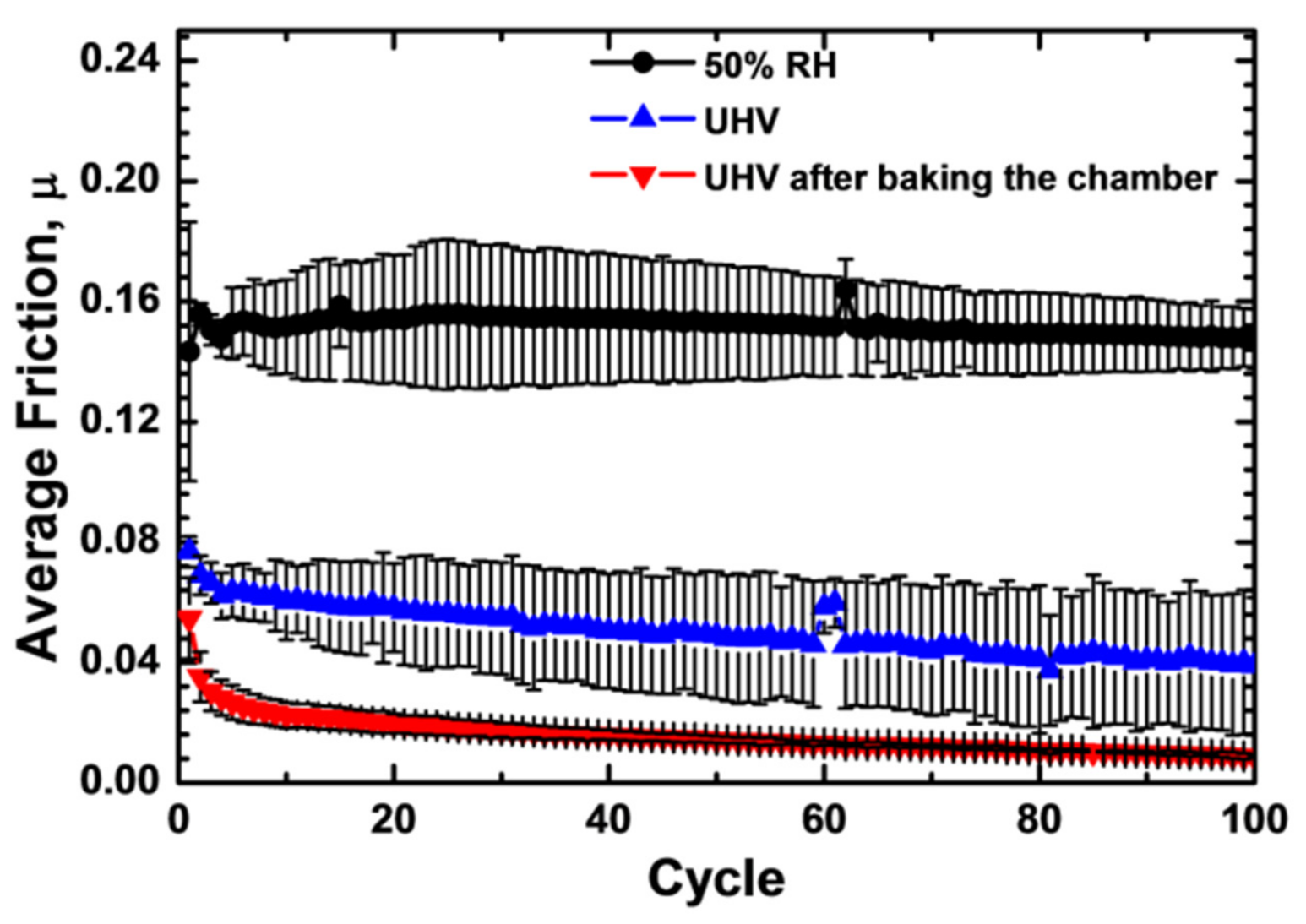
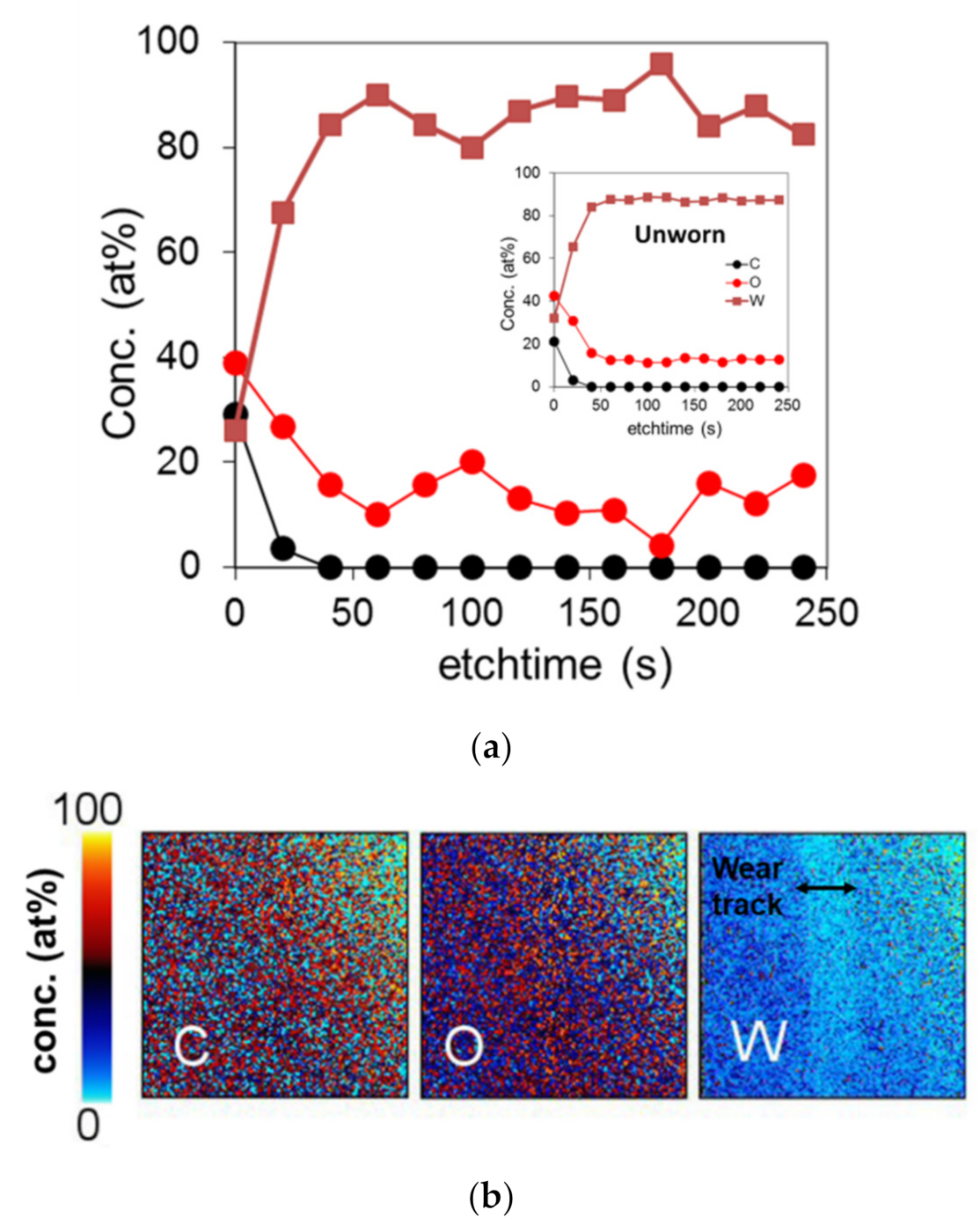
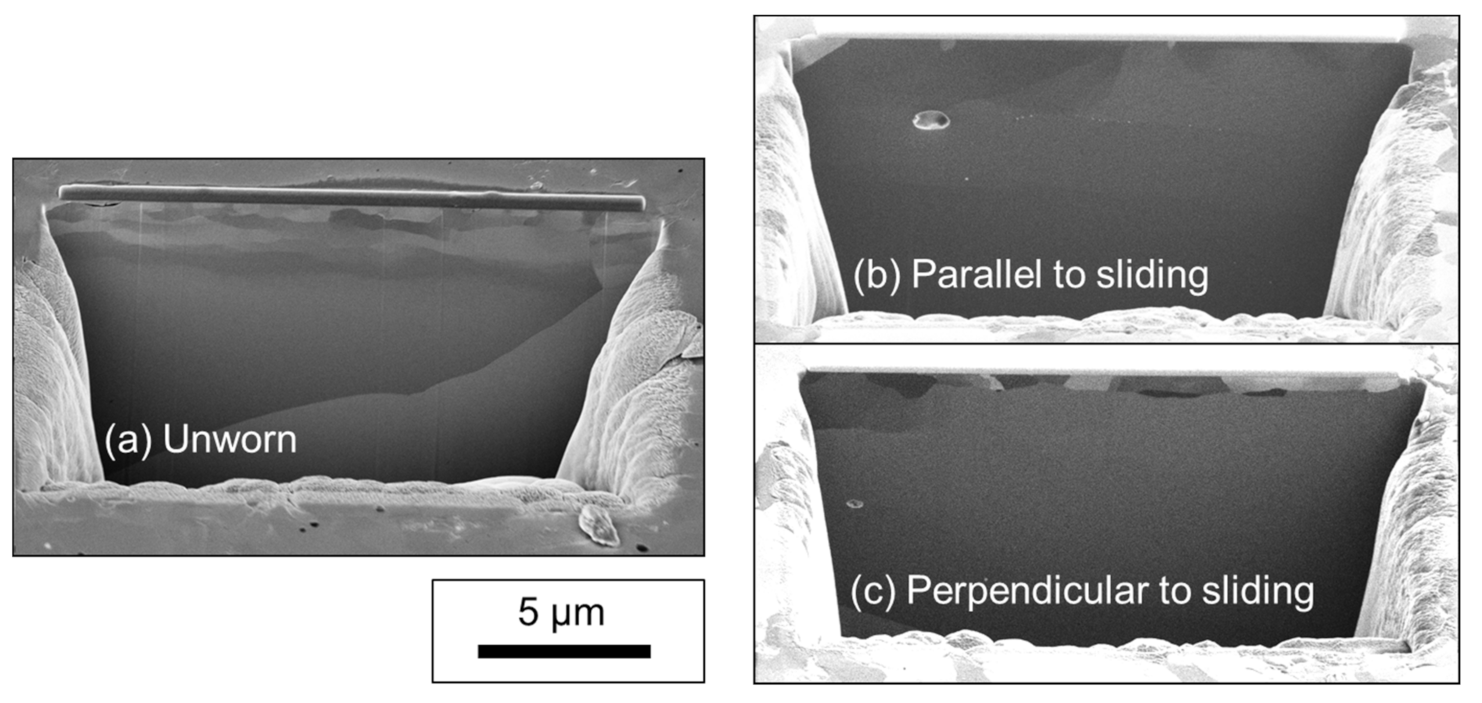
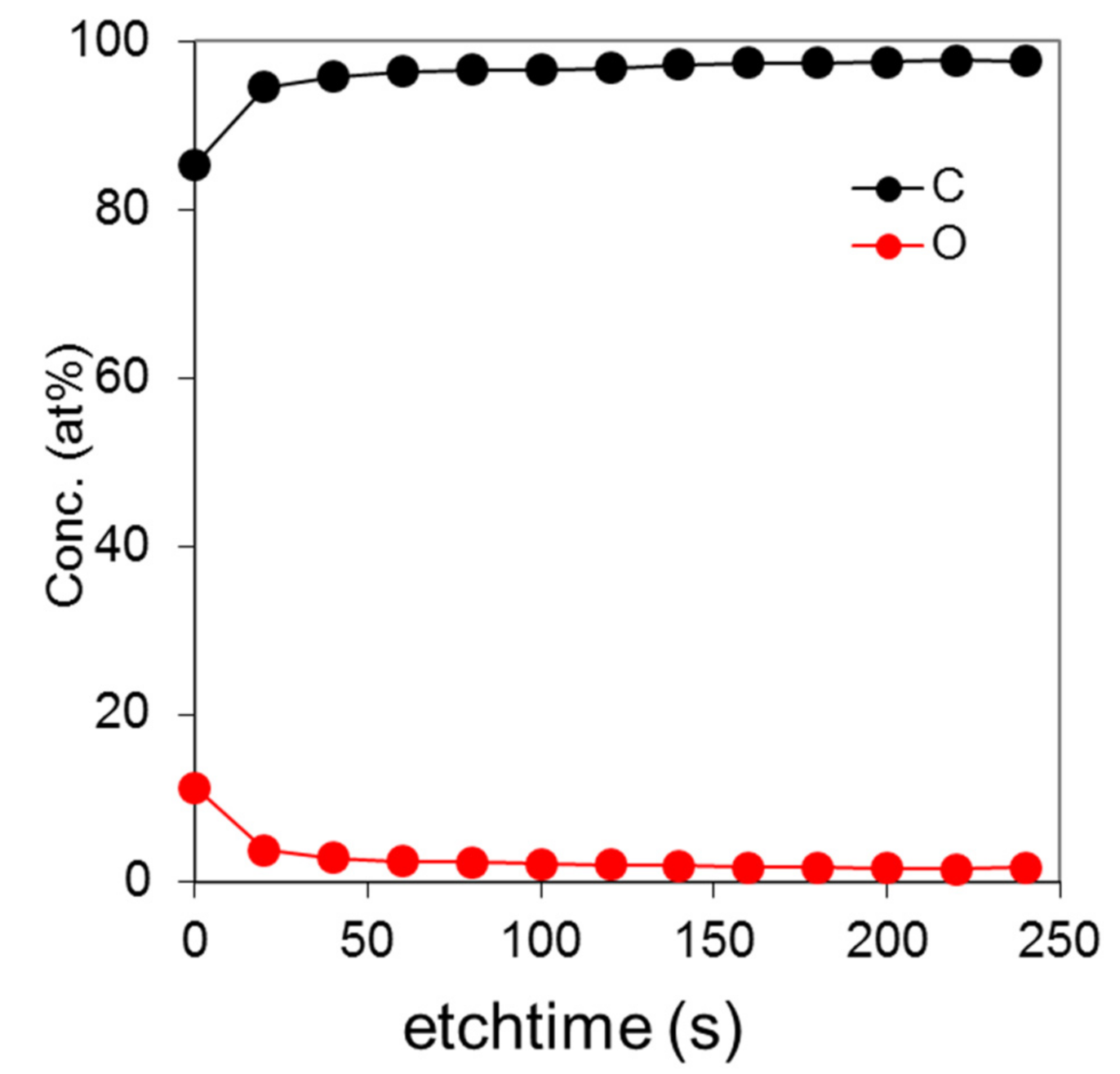
Publisher’s Note: MDPI stays neutral with regard to jurisdictional claims in published maps and institutional affiliations. |
© 2021 by the authors. Licensee MDPI, Basel, Switzerland. This article is an open access article distributed under the terms and conditions of the Creative Commons Attribution (CC BY) license (https://creativecommons.org/licenses/by/4.0/).
Share and Cite
Stoyanov, P.; Merz, R.; Stricker, M.; Kopnarski, M.; Dienwiebel, M. Achieving Ultra-Low Friction with Diamond/Metal Systems in Extreme Environments. Materials 2021, 14, 3791. https://doi.org/10.3390/ma14143791
Stoyanov P, Merz R, Stricker M, Kopnarski M, Dienwiebel M. Achieving Ultra-Low Friction with Diamond/Metal Systems in Extreme Environments. Materials. 2021; 14(14):3791. https://doi.org/10.3390/ma14143791
Chicago/Turabian StyleStoyanov, Pantcho, Rolf Merz, Markus Stricker, Michael Kopnarski, and Martin Dienwiebel. 2021. "Achieving Ultra-Low Friction with Diamond/Metal Systems in Extreme Environments" Materials 14, no. 14: 3791. https://doi.org/10.3390/ma14143791





